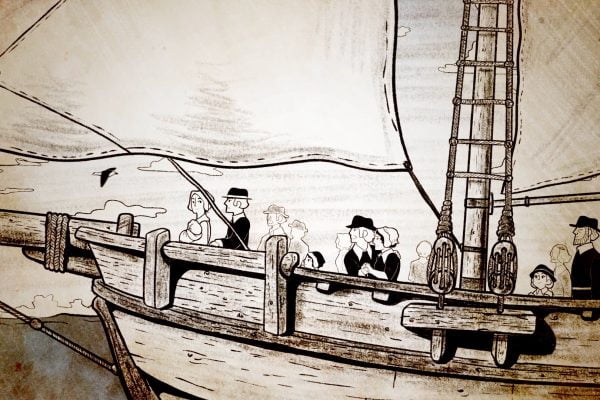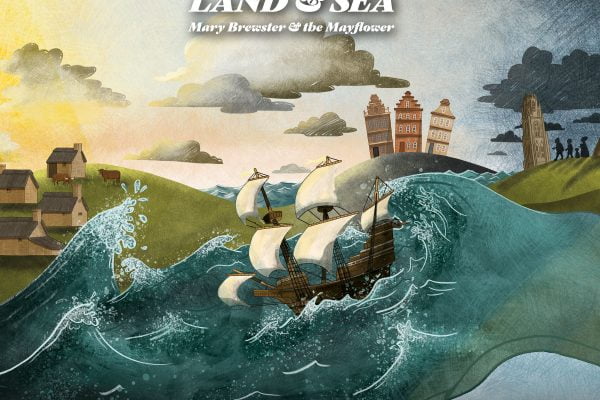In September of 1620 this group of people, who would become known as the Pilgrims, left their final stop in Plymouth to seek freedom to practice their religion and opportunity across the Atlantic. Many believe they laid the foundations for modern America.
The Fight for Religious Freedom
The origins of the Pilgrims story can be traced back to the 1500s, when changes in English religious law and social life would divide the nation. At that time, King Henry VIII decided to break away from the established Catholic Church in Rome to create his own Protestant church – the Church of England. Henry was the head of this church and its laws, and so was rejected by the head of the Catholic Church, the Pope. Similar shifts had been happening on the continent as religious leaders rejected Catholic practices and reformed into Protestant churches – this ‘Reformation’ had now come to England.
Many believed that Henry’s new church was still too similar to the Pope’s and wanted even more changes. Some wanted to ‘purify’ it, stripping away all Catholic practices. They became known as the Puritans. However, others believed that you could not change the church and that the only way forward was to separate from it entirely and form a new church. They became known as the Separatists.
Separatists in the Pilgrim Roots Region
The Mayflower story is significant to this region because it carried a group of leading Separatists and their families to America, many of whom came from Lincolnshire, Nottinghamshire and Yorkshire. They first fled to Holland, before later deciding to sail to America to establish one of the earliest colonies there, and take control of their own religious practices.
It was in our region of England that these people formed their ideas and plans for new lives – deciding to separate from the established Church to form their own at a time when this was illegal.
One of the leading Separatists was William Brewster from Scrooby. He had been inspired by the radical words of Richard Clifton, the rector of the nearby village of Babworth. It is believed that Brewster hosted a Separatist group in his family home, Scrooby Manor. Brewster strongly influenced William Bradford from Austerfield near Doncaster, who went on to become Plymouth Colony’s Governor in America, serving the colony for more than 30 years.
Worshipping in Secret

Another group of Separatists were thought to have worshiped clandestinely at Gainsborough Old Hall – now regarded as one of the best-preserved medieval manor houses in Britain – with the permission of its sympathetic owner, merchant William Hickman.
Their preacher, John Smyth, was a strong influence on the Mayflower Pilgrims, and is generally considered to have later been a founder of the Baptist churches. Smyth had a large following of sixty or seventy people, who decided in 1607 that they would emigrate in pursuit of religious freedom.
The Escape
The Separatists were being pushed to conform to the rules of the established Church, and Sir William Hickman found himself under pressure from the Bishop of Lincoln for permitting John Smyth to preach. Unable to emigrate legally without permits and unable to obtain permits, John Smyth and many of his followers slipped away from Gainsborough in 1607, escaping to Holland. Scrooby’s Separatist group also escaped, attempting first but unsuccessfully at Boston before finally escaping from Immingham to Amsterdam.
The Separatists found life in Holland difficult and after nearly 12 years, some of the Separatists decided they needed to move again. They made plans to leave for Virginia in America, and start a new community.
Pilgrims
To help raise the money, the Separatists made an agreement with the Virginia Company, which had been created to establish colonies on the east coast of North America. The Separatists in Holland sold their personal belongings in order to buy a ship called the Speedwell. They set sail in August 1620 from Delfshaven, Holland, and headed to England to meet the Mayflower, which had been hired by their financial backers and filled with passengers that could support the creation of a new colony. After meeting in Southampton, the two ships set sail, but the Speedwell had to be abandoned in Plymouth after proving unseaworthy, and so the Mayflower made the voyage alone.
The Voyage
It was crowded on the ship, and many endured hunger and poor living conditions, but this was only a sign of what was to come. To make matters worse and because the voyage had been delayed, winter storms blew the ship off course. Instead of sailing to Virginia, the ship arrived off the coast of Massachusetts, further north, mooring in Cape Cod at what is now Provincetown in late November 1620. That day, the settlers wrote the Mayflower Compact. Signed by 41 men on board – the first names being those men who had led the journey from the English East Midlands to the American East Coast – the compact was an agreement to cooperate for the general good of the colony, and was necessary after the change to their intended destination; they all needed to get on to survive. They would deal with issues by voting, establish constitutional law and rule by the majority. This was later claimed to have inspired the men who wrote the American Constitution and the Declaration of Independence.
To find out more visit the Mayflower400 website.




